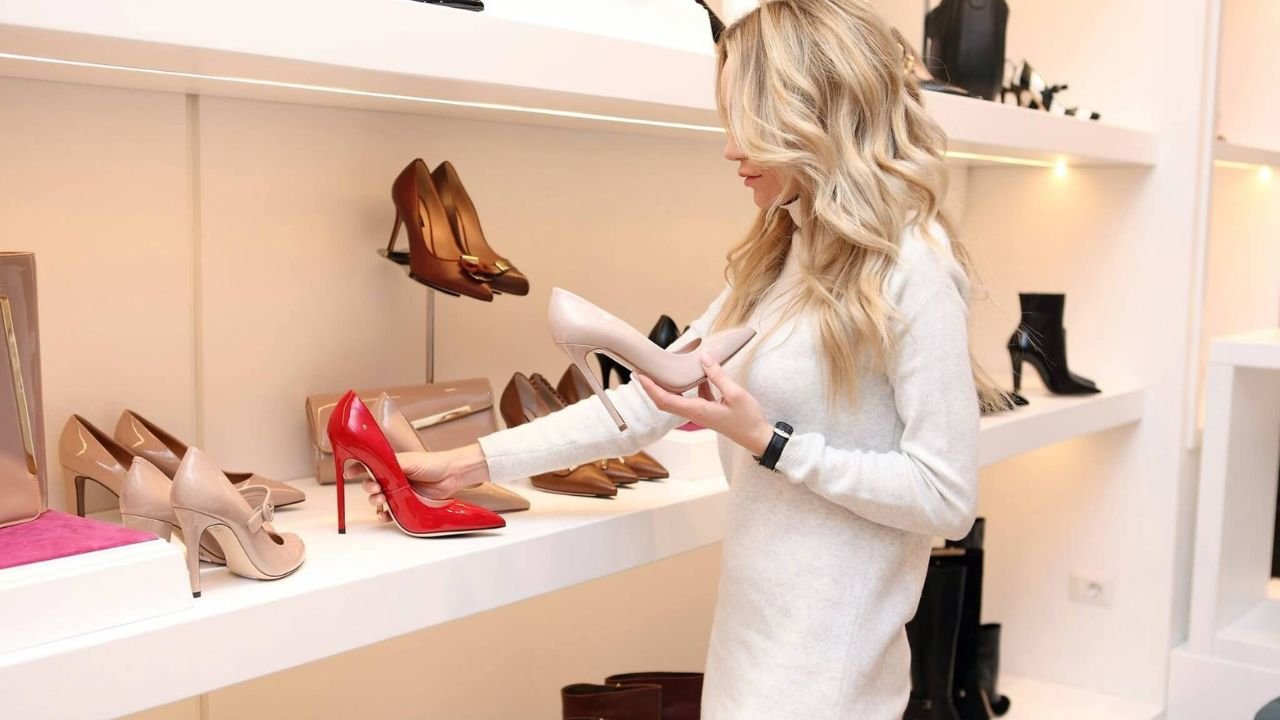Introduction
Shoes are more than just a necessity; they are an extension of your personality, a reflection of your style, and an essential component of your wardrobe. Whether you’re searching for comfortable everyday sneakers, elegant heels, trendy boots, or specialized athletic shoes, finding the right shoe store is crucial to ensuring a satisfying shopping experience and a wardrobe that truly expresses who you are.
With countless options available—from brick-and-mortar boutiques and department stores to online retailers—the task of choosing the perfect shoe store can seem overwhelming. This comprehensive guide aims to demystify the process, helping you identify your personal style, understand the different types of shoe stores, and consider essential factors to make informed decisions.
1. Understanding Your Personal Shoe Style
Before venturing out to find the ideal shoe store, it’s important to understand your own style preferences and needs.
1.1 Assessing Your Wardrobe and Lifestyle
Your lifestyle heavily influences the type of shoes you need and the stores that cater to those needs.
- Casual & Comfortable: If your daily routine involves walking, commuting, or casual outings, comfort and versatility are key. Think sneakers, loafers, or slip-ons.
- Professional & Elegant: For work or formal occasions, look for stores offering classic pumps, oxfords, or dress shoes.
- Trendy & Fashion-Forward: If you love staying ahead of fashion trends, seek stores that stock the latest styles, designer collaborations, and statement pieces.
- Outdoor & Adventure: For hiking, trekking, or outdoor activities, prioritize stores specializing in outdoor gear and rugged footwear.
- Athletic & Performance: For sports, running, or gym workouts, focus on stores that carry athletic brands with specialized footwear.
1.2 Defining Your Style Aesthetic
Your personal style also influences your shoe choices. Consider the following categories:
- Classic & Timeless: Neutral colors, simple designs, and versatile styles.
- Bohemian & Free-Spirited: Fringe, earthy tones, vintage-inspired designs.
- Edgy & Punk: Bold colors, studs, and unconventional shapes.
- Chic & Fashion-Forward: Trendy details, unique embellishments, high-end brands.
- Minimalist: Clean lines, monochrome palettes, understated elegance.
1.3 Identifying Your Footwear Needs
List your essential footwear types:
- Everyday sneakers
- Formal shoes
- Boots (ankle, knee-high)
- Sandals and flip-flops
- Athletic shoes
- Specialty shoes (dance, safety footwear, etc.)
Knowing what you need helps narrow down the store types that will best serve your wardrobe.
2. Types of Shoe Stores and Retailers
Different stores cater to different shopping experiences, price points, and styles. Understanding these options will help you make the best choice.
2.1 Department Stores
Examples: Nordstrom, Macy’s, Bloomingdale’s, Saks Fifth Avenue
Features:
- Wide selection across multiple brands and styles
- Usually have dedicated shoe departments
- Offer both affordable and high-end options
- Expert staff to assist with fitting and recommendations
Best for:
- One-stop shopping
- Comparing multiple brands
- Finding both casual and formal shoes
2.2 Specialty Shoe Stores
Examples: Foot Locker, DSW, Aldo, Clarks, Nike Store, Converse
Features:
- Focused on specific categories (athletic, casual, formal)
- Often carry exclusive brands or models
- Staff knowledgeable about particular shoe types
Best for:
- Athletic footwear
- Trendy or niche styles
- Brand-specific shopping
2.3 Designer & High-End Boutiques
Examples: Christian Louboutin, Jimmy Choo, Stuart Weitzman, Gucci
Features:
- Offer luxury, high-end, or designer shoes
- Emphasize craftsmanship and exclusivity
- Higher price points
Best for:
- Special occasions
- Investment pieces
- Statement footwear
2.4 Online Retailers
Examples: Zappos, Amazon, Farfetch, Net-a-Porter, Brand-specific websites
Features:
- Extensive selection and brands
- Convenient shopping from home
- User reviews and detailed sizing info
- Often free shipping and returns
Best for:
- Browsing diverse styles
- Finding hard-to-locate sizes
- Comparing prices
2.5 Local Boutiques & Independent Shops
Features:
- Unique, curated collections
- Personalized service
- Support for small businesses
Best for:
- Discovering niche brands
- Unique styles not found elsewhere
- Supporting local artisans
2.6 Discount & Outlet Stores
Examples: Nordstrom Rack, Saks OFF 5TH, outlet malls
Features:
- Lower prices on brand-name shoes
- Past season styles
- Good deals if you’re flexible on newest releases
Best for:
- Budget-conscious shopping
- Finding high-quality shoes at reduced prices
3. Factors to Consider When Choosing a Shoe Store
To find the perfect store for your style and needs, consider these essential factors:
3.1 Selection and Variety
- Does the store carry the styles, brands, and sizes you’re seeking?
- Is there a good mix of casual, formal, and athletic shoes?
- Are the latest trends available?
3.2 Price Range and Budget
- Does the store fit your budget?
- Are there options for both affordable and premium shoes?
- Are there frequent sales or discount events?
3.3 Quality and Brand Reputation
- Are the shoes durable and well-made?
- Does the store carry reputable brands known for quality?
- For high-end shopping, are the shoes crafted with quality materials?
3.4 Fitting and Comfort
- Does the store offer professional fitting advice?
- Can they accommodate special foot needs (wide, narrow, orthotics)?
- Are there trial and return policies that allow you to test comfort?
3.5 Customer Service and Expertise
- Are staff knowledgeable and helpful?
- Do they provide personalized recommendations?
- Is there assistance with sizing and styling?
3.6 Return & Exchange Policies
- Is the return process straightforward?
- Are there flexible policies for online and in-store purchases?
- Do they offer warranties or repairs?
3.7 Accessibility & Convenience
- Is the store located nearby or easily accessible?
- Do they offer online shopping with reliable shipping?
- Are there convenient hours and services like curbside pickup or virtual appointments?
3.8 Sustainability & Ethical Practices
- Does the store prioritize eco-friendly materials?
- Do they support fair labor practices?
- Are there options for vegan or cruelty-free shoes?
4. How to Find the Perfect Shoe Store for Your Style
Now that you understand what to look for, follow these steps to identify the best store for you.
4.1 Define Your Style & Needs
Revisit your wardrobe and lifestyle checklist. Clarify what types of shoes are essential and the aesthetic you prefer.
4.2 Research Local and Online Options
Use search engines, review sites (Yelp, Google Reviews), and social media to identify stores in your area and reputable online shops.
4.3 Visit or Browse Multiple Stores
Visit physical stores to get a feel for the atmosphere, selection, and service. For online stores, explore their catalogs, reviews, and return policies.
4.4 Seek Personalized Recommendations
Ask store staff for suggestions based on your style, foot shape, and purpose. Use online chat or virtual styling services if available.
4.5 Test Fit & Comfort
Try on multiple pairs to assess fit, comfort, and style. Walk around the store to evaluate how shoes feel during movement.
4.6 Consider Future Needs
Think ahead—will these shoes suit your upcoming events, seasons, or changing style preferences?
4.7 Read Reviews & Feedback
Check customer reviews for insights into sizing accuracy, comfort, and quality.
4.8 Make Informed Decisions
Balance style, comfort, quality, and price to choose the store that best aligns with your overall needs.
5. Tips for Shopping Smart and Successfully
- Know Your Shoe Size: Sizes vary across brands and countries. Always try on shoes or check sizing charts.
- Prioritize Comfort: Style is important, but comfort ensures you’ll wear your shoes regularly.
- Consider Versatility: Choose shoes that can pair with multiple outfits.
- Invest in Quality: Especially for staple pieces like black pumps or walking shoes.
- Don’t Rush: Take your time to find shoes that fit well and suit your style.
- Buy Off-Season: Shop for shoes during sales or off-peak seasons for better deals.
- Maintain Your Shoes: Proper care extends their lifespan and appearance.
6. Popular Shoe Stores for Different Styles
Here’s a quick guide matching store types to different style preferences:
| Style/Need | Recommended Store Types | Examples |
|---|---|---|
| Casual & Comfortable | Department stores, specialty casual stores, online retailers | Nike, DSW, Zappos, Nordstrom Rack |
| Formal & Elegant | High-end boutiques, department stores | Saks, Neiman Marcus, designer boutiques |
| Trendy & Fashion-Forward | Fast-fashion stores, trendy boutiques, online stores | Aldo, Steve Madden, Revolve, Farfetch |
| Outdoor & Adventure | Specialty outdoor stores, outdoor brands | REI, Patagonia, Columbia |
| Athletic & Performance | Sport-specific stores, brand outlets | Nike, Adidas, Under Armour |
| Eco-Conscious & Ethical | Sustainable brands, eco-friendly boutiques | Allbirds, Veja, Stella McCartney |
7. Final Thoughts and Summary
Finding the perfect shoe store for your style is a personalized journey that involves understanding your needs, preferences, and lifestyle. By defining your style aesthetic, assessing your footwear needs, and researching various store options, you can make informed choices that enhance your wardrobe and confidence.
Remember, the ideal shoe store isn’t necessarily the one with the most options but the one that aligns with your values, fits your budget, offers exemplary service, and provides shoes that make you feel good inside and out. Whether shopping in person or online, patience and knowledge will lead you to the perfect pair—and the perfect store—to keep your style steps aligned.




